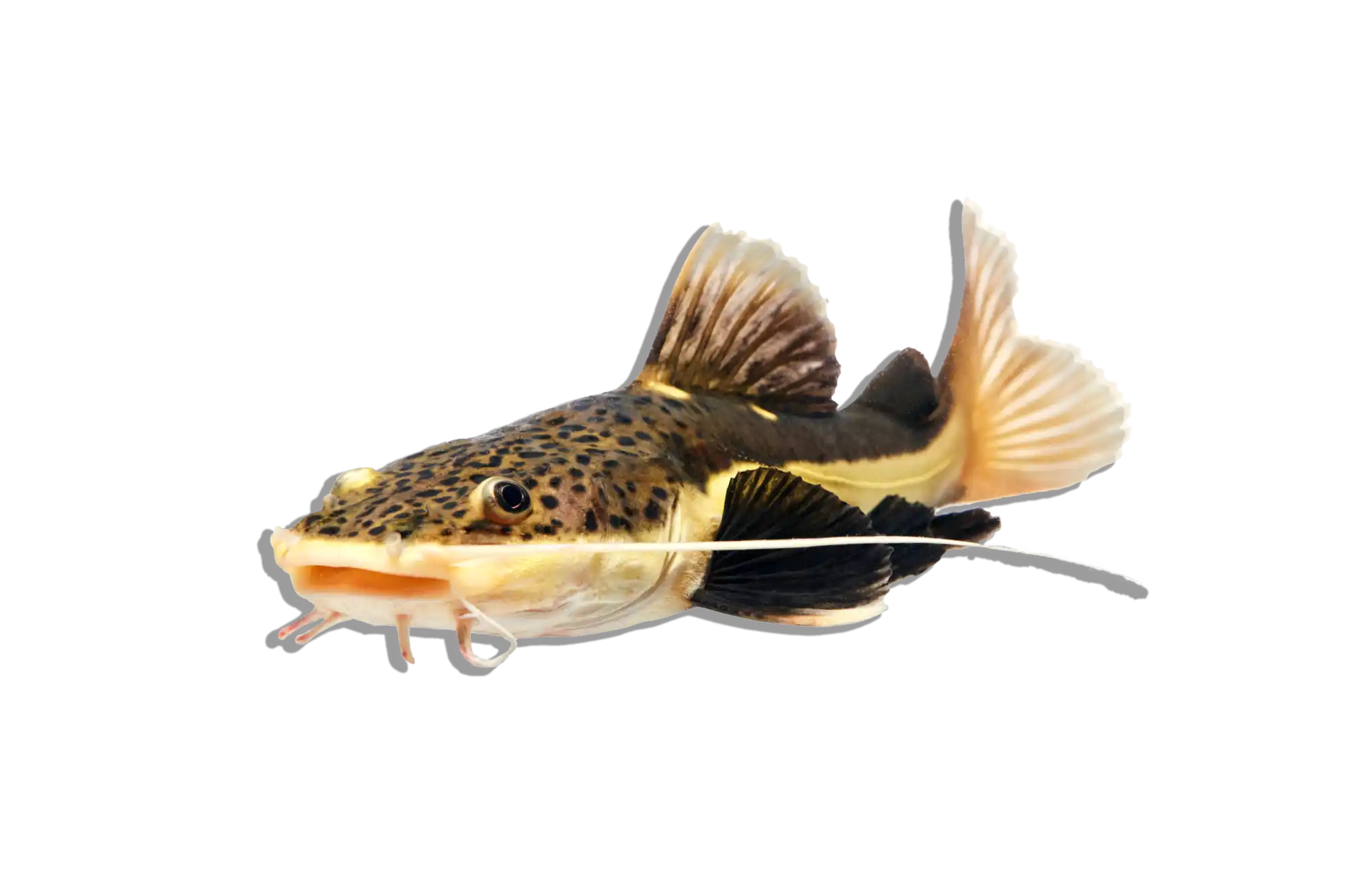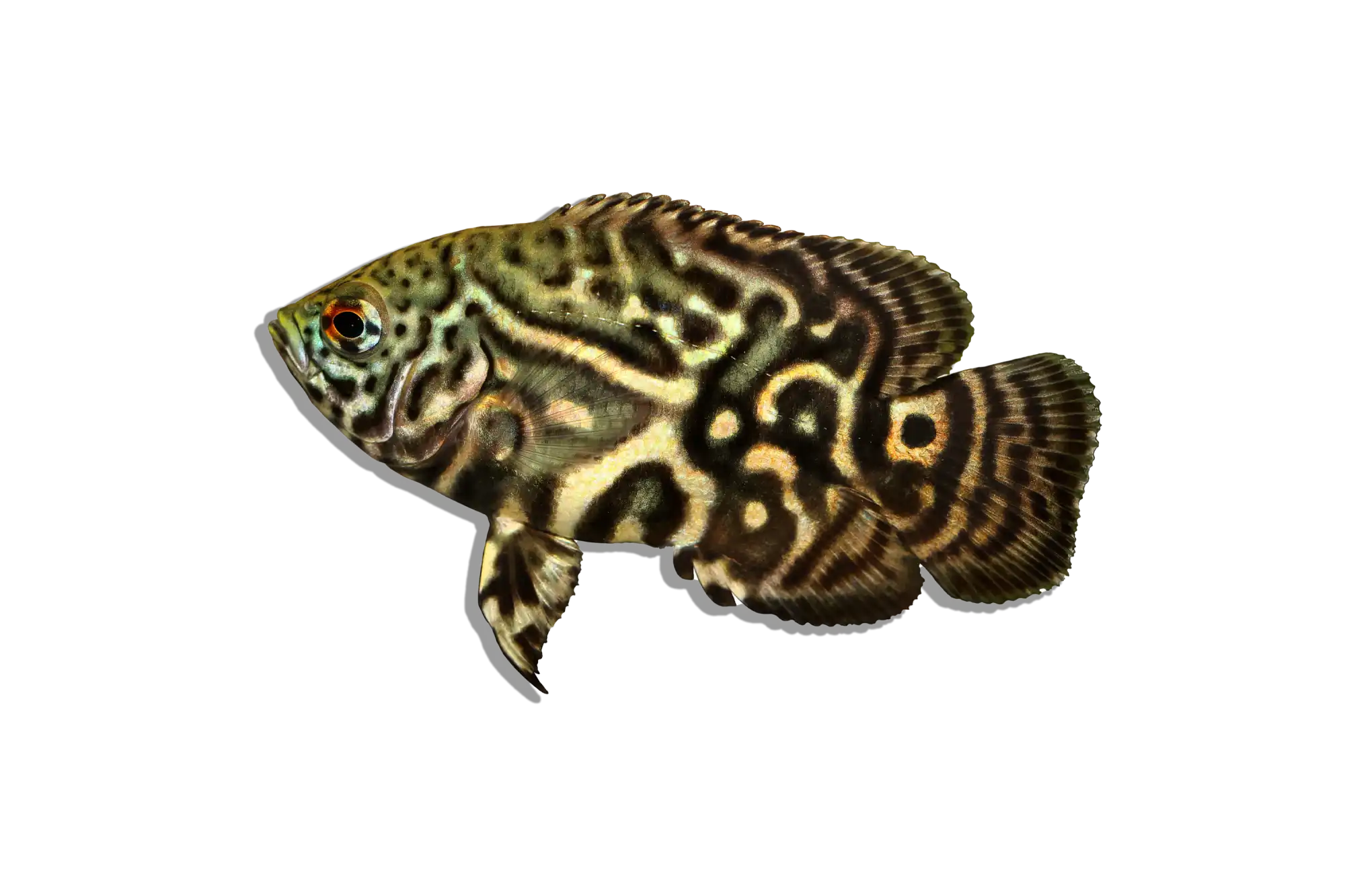Description
Common Name: Xingu Spiny Monster Pleco
Scientific Name: Pseudacanthicus sp.
Other Names: L185, Spiny Monster Pleco
The Xingu Spiny Monster Pleco is a large and visually impressive freshwater fish known for its striking appearance and distinctive spiny texture. Its body is covered in sharp, bony protrusions and has a dark, almost black coloration with lighter spots or marbling. The fins are large and robust, contributing to its formidable look. This pleco is highly sought after by aquarists due to its unique appearance and the challenge of caring for such a large, specialized species.
Habitat and Distribution:
The Xingu Spiny Monster Pleco is native to the Xingu River Basin in Brazil, a tributary of the Amazon River. This region is characterized by fast-flowing, oxygen-rich waters with rocky substrates and numerous hiding spots created by submerged wood and rocks. The Xingu River is known for its clear waters and high biodiversity.
Size and Lifespan:
In the wild and in captivity, Xingu Spiny Monster Plecos can grow up to 18-24 inches (45-60 cm) or more. With proper care, their lifespan can range from 10 to 15 years, depending on the quality of their diet and water conditions.
Diet and Behavior:
Xingu Spiny Monster Plecos are omnivorous, feeding on a mix of algae, biofilm, plant matter, and small invertebrates in their natural habitat. In an aquarium, their diet should include high-quality sinking pellets, algae wafers, and fresh vegetables such as zucchini, cucumber, and spinach. They also require protein-rich foods like bloodworms, brine shrimp, and pieces of fish. These plecos are mostly nocturnal and are more active during the night. They are generally territorial and can be aggressive towards other plecos, so it’s best to provide ample space and hiding spots.
Breeding and Reproduction:
Breeding Xingu Spiny Monster Plecos in captivity is challenging and rarely achieved due to their size and specific environmental needs. Little is documented about their breeding habits in the wild. They are likely to spawn in specific conditions that are difficult to replicate in an aquarium setting. Successful breeding typically requires very large, well-maintained tanks with optimal water conditions and plenty of hiding spots.
Aquarium Care and Tank Requirements:
Due to their large size and territorial nature, Xingu Spiny Monster Plecos require a very large aquarium, with a minimum of 200 gallons recommended for adult specimens. The tank should have a soft, sandy or fine gravel substrate to prevent injury to their delicate barbels. Include plenty of hiding spots created with rocks, driftwood, and caves to mimic their natural habitat and reduce stress. Efficient filtration and regular water changes are essential to maintain water quality, as these fish produce a significant amount of waste. The water temperature should be kept between 78-86°F (26-30°C), with a pH of 6.0-7.5 and soft to moderately hard water.
Ideal Tank Mates:
Xingu Spiny Monster Plecos can be kept with other large, robust fish that share similar water parameter requirements. Suitable tank mates include large cichlids, other large catfish, and similarly aggressive species. Avoid housing them with small or delicate species that may become targets of aggression or predation.
Difficulty Level:
Advanced. Keeping Xingu Spiny Monster Plecos requires a deep understanding of their needs, including their large size, territorial behavior, and specific water quality requirements. They are best suited for experienced aquarists with the space and resources to provide proper care.
Water Parameters:
- Temperature: 78-86°F (26-30°C)
- pH: 6.0-7.5
- General Hardness (GH): 5-15 dGH
- Carbonate Hardness (KH): 4-10 dKH
- Ammonia: 0 ppm (ideal)
- Nitrite: 0 ppm (ideal)
- Nitrate: <20 ppm (ideal)
Additional Information:
- The Xingu Spiny Monster Pleco’s unique appearance and large size make it a striking addition to any large aquarium.
- They are known for their territorial nature and should be provided with plenty of space and hiding spots to minimize aggression.
- Fun fact: The sharp, spiny protrusions on their body provide protection against predators and are a distinctive feature that sets them apart from other pleco species.




















